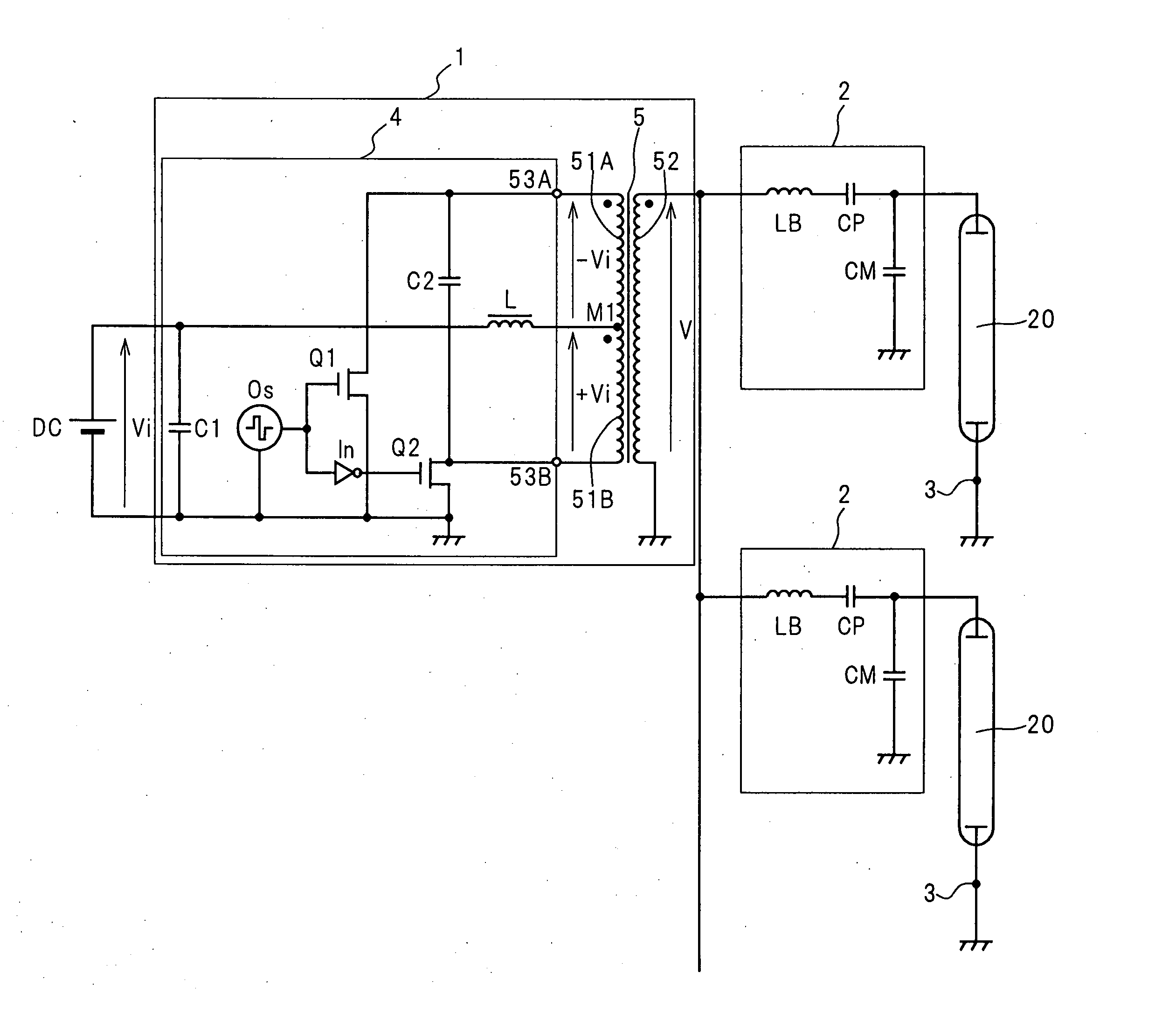Cold cathode fluorescent lamp driver circuit
- Summary
- Abstract
- Description
- Claims
- Application Information
AI Technical Summary
Benefits of technology
Problems solved by technology
Method used
Image
Examples
embodiment 1
<<Embodiment 1>>
FIG. 1 is a front view showing the inside of a liquid crystal display equipped with a CCFL driver circuit according to Embodiment 1 of the present invention. FIG. 2 is a cross-sectional view of the liquid crystal display taken along the line II-II shown in FIG. 1. The arrows shown in FIG. 1 represent the eye direction. This liquid crystal display comprises a case 10, more than one CCFL 20, a reflector 30, a first circuit board 40, a second circuit board 50, a third circuit board 60, and a liquid crystal panel 70. The CCFL driver circuit according to Embodiment 1 of the present invention is mainly divided into three blocks 1, 2, and 3, which are mounted on the first circuit board 40, the second circuit board 50, and the third circuit board 60, respectively.
The case 10 is, for example, a metallic box that is grounded. The front side of the case 10 is open. The reflector 30, the CCFLs 20, and the liquid crystal panel 70 (not shown in FIG. 1) are placed in or...
embodiment 2
<<Embodiment 2>>
A CCFL driver circuit according to Embodiment 2 of the present invention is installed into a liquid crystal display in a manner similar to that of the circuit according to the above-described Embodiment 1. The structure of the liquid crystal display is similar to the structure according to the above-described Embodiment 1, and hence, the description of the structure cites FIGS. 1 and 2 and the description for the above-described Embodiment 1.
FIG. 7 is the circuit diagram showing the configuration of the CCFL driver circuit according to Embodiment 2 of the present invention. The CCFL driver circuit comprises components similar to the components of the circuit according to Embodiment 1 (cf. FIG. 3), except the configuration of the first block 1. Accordingly, those similar components are marked with the same reference symbols as the reference symbols shown in FIG. 3, and the description of them cites the descriptions for Embodiment 1.
A first block 1 includ...
embodiment 3
<<Embodiment 3>>
A CCFL driver circuit according to Embodiment 3 of the present invention is installed into a liquid crystal display in a manner similar to that of the circuit according to the above-described Embodiment 1. The structure of the liquid crystal display is similar to the structure according to the above-described Embodiment 1, and hence, the description of the structure cites FIGS. 1 and 2 and the description for the above-described Embodiment 1.
FIG. 8 is the circuit diagram showing the configuration of the CCFL driver circuit according to Embodiment 3 of the present invention. The CCFL driver circuit comprises components similar to the components of the circuit according to Embodiment 1 (cf. FIG. 3), except the configuration of the second block 2 and the third block 3. Accordingly, those similar components are marked with the same reference symbols as the reference symbols shown in FIG. 3, and the description of them cites the descriptions for Embodiment 1. ...
PUM
 Login to View More
Login to View More Abstract
Description
Claims
Application Information
 Login to View More
Login to View More - R&D
- Intellectual Property
- Life Sciences
- Materials
- Tech Scout
- Unparalleled Data Quality
- Higher Quality Content
- 60% Fewer Hallucinations
Browse by: Latest US Patents, China's latest patents, Technical Efficacy Thesaurus, Application Domain, Technology Topic, Popular Technical Reports.
© 2025 PatSnap. All rights reserved.Legal|Privacy policy|Modern Slavery Act Transparency Statement|Sitemap|About US| Contact US: help@patsnap.com



